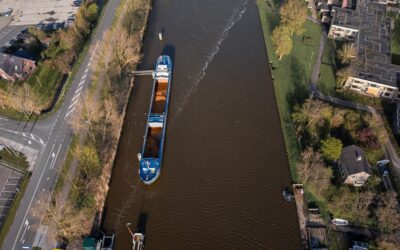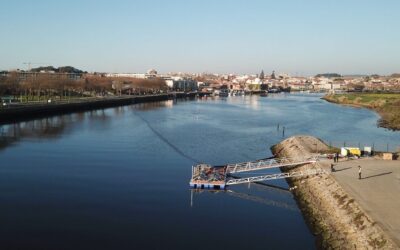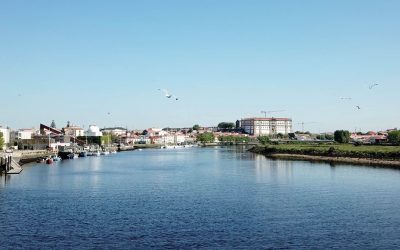What started in 2018 as an initiative of concerned citizens, has now grown into a unique, widely supported mission to tackle plastic pollution in the Katwijk region, The Netherlands. This movement has led to the implementation of an innovative solution against plastic pollution in the municipality of Katwijk: a Bubble Barrier.
A unique collaboration to fight plastic pollution
Plastic pollution is a growing problem worldwide affecting communities as well as the environment. “During our clean-up activities, we see that plastic pollution flows into the North Sea via the Oude Rijn in Katwijk” says Claar-Els, one of the Coast Busters, a local initiative focused on raising awareness of plastic pollution in Katwijk. “Every year, more than 1 million pieces of plastic end up in the North Sea at Katwijk. That amounts to more than 2 tonnes of plastic which poses a great threat to our ecosystem and our food chain.”
To kickstart actions on plastic pollution, the Coast Busters invited councillor Jacco Knape of the municipality of Katwijk to participate in clean-up activities and see the problem with his own eyes. “Plastic pollution has no place in a healthy, safe living environment,” emphasises Jacco Knape who encouraged the local initiative to investigate a long-term solution.
The Coast Busters quickly gained the backing of the whole region to get a long-term solution in place which is being delivered via a partnership with the municipality of Katwijk and the regional waterboard authority Hoogheemraadschap van Rijnland.
Support for action has spread to neighbouring municipalities from Holland Rijnland as well as in Teylingen, Wassenaar, Leiderdorp, Woerden, Utrecht and the province of Zuid-Holland. The Coast Busters even got commercial sponsors, on board. “The problem is being tackled locally but has a broader effect: plastic pollution from the entire region upstream will be stopped” says Emile Jaensch, a representative of Holland Rijnland.
“A perfect example that shows that together – government, partners and residents – can make a difference” adds Jacco Knape.
Implementing a long-term solution with a Bubble Barrier
The first Bubble Barrier within one kilometre from the sea is now fully operational in Katwijk. “We were looking for a long-term solution to stop plastic and found the Bubble Barrier technology an effective way to catch all sizes of plastic particles” says Claar-Els.
In recent years, the Bubble Barrier system has been extensively tested and has been proven to catch plastic particles as small as 1 mm and intercept 86% of floating test material in inland waters.
“The Bubble Barrier positively contributes to clean and healthy water. Thanks to the bubble screen, we ensure that plants and animals are protected from plastic pollution and therefore contribute to increased biodiversity,” says Waldo von Faber of the Rijnland Water Board.
“We are particularly proud to see communities empowered to take action and reaching out to us like the Coast Busters” comments Anne Marieke Eveleens, Co-Founder at The Great Bubble Barrier. “It really shows the power of collaboration to solve plastic pollution.”
How does a Bubble Barrier work?
The Bubble Barrier consists of a bubble curtain, a catchment system, and an air supply. The bubble curtain prevents plastics from floating down the river and into our oceans. The Bubble Barrier is created by pumping air through a perforated tube laying on the bottom of the river. This generates an upward current which directs plastics to the surface. By placing the bubble curtain diagonally across the river, the natural flow of the river will push the plastic waste to the side and into the catchment system. The catchment system is placed at the end of the bubble curtain and stays in place regardless of water level or the wake from passing ships. The Bubble Barrier is deployed along the entire width and depth of the waterway and can work 24 hours a day, 7 days a week, without interfering with shipping traffic.
Education on Plastic Pollution
But the local initiative does not stop here. The Coast Busters plan on building an education and monitoring centre to create awareness about the amount of plastic in our waterways, as well as the actions needed to prevent and reduce the problem. The centre will also monitor and analyse the type and amount of plastic collected by the Bubble Barrier. The knowledge from this research will be used to remove even more plastic from the rivers with targeted actions.




